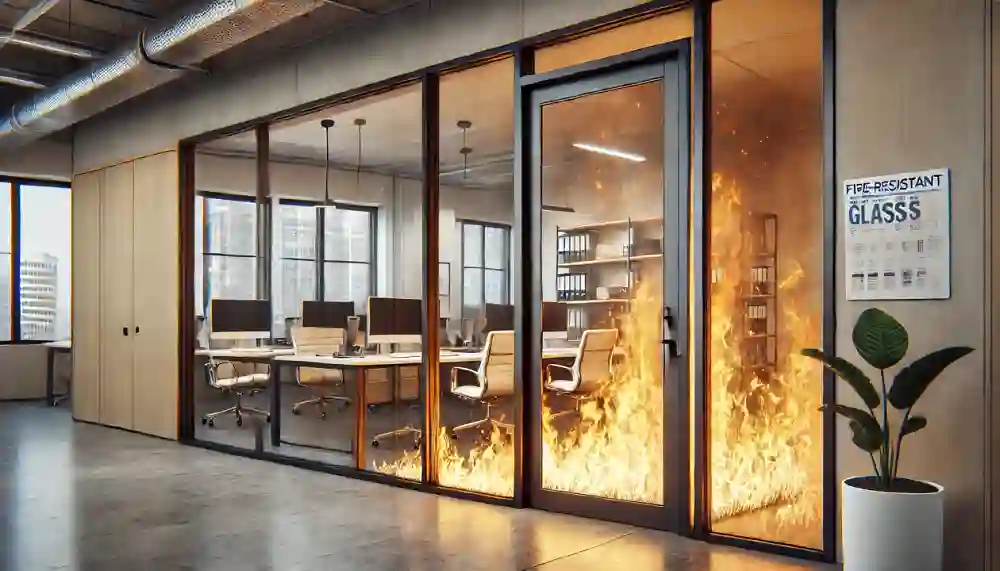In the evolving landscape of modern architecture, the quest for aesthetic appeal and functional safety has never been more pronounced. One material that has gained significant attention in the realm of fire safety is fire-rated glass. This specialized glass serves a dual purpose: enhancing architectural beauty while providing crucial fire protection. In this article, we will explore the importance of fire-rated glass, its types, applications, and its role in modern architecture.

Understanding Fire-Rated Glass
Fire-rated glass is designed to withstand high temperatures and limit the spread of flames and smoke during a fire. Unlike regular glass, which can shatter and allow flames to pass through, fire-rated glass is engineered to maintain its integrity under fire conditions. The testing standards for fire-rated glass, such as those established by the Underwriters Laboratories (UL) and the National Fire Protection Association (NFPA), categorize glass based on its ability to resist fire for a specified duration—commonly measured in minutes (e.g., 20, 45, 60, or 90 minutes).
Types of Fire-Rated Glass
There are several types of fire-rated glass available on the market, each designed for specific applications:
1. Wired Glass
Wired glass is one of the earliest forms of fire-rated glass. It consists of a layer of wire mesh embedded within the glass. This mesh acts as a reinforcement, preventing the glass from breaking easily and maintaining a barrier against flames. Wired glass is often used in areas where impact resistance is essential, such as schools and public buildings.
2. Ceramic Glass
Ceramic glass is a modern alternative to wired glass, offering superior performance. It can withstand higher temperatures and provides better visibility. Ceramic glass is often used in applications where aesthetics are crucial, such as in fire-rated doors and partitions in commercial and residential buildings.
3. Intumescent Glass
Intumescent glass is designed to react to heat. When exposed to high temperatures, it expands to form a thick, insulating barrier that prevents flames and smoke from passing through. This type of glass is often used in fire-rated windows and doors, particularly in high-rise buildings and areas requiring a high degree of fire protection.
The Role of Fire-Rated Glass in Modern Architecture
As architects increasingly prioritize open spaces and natural light, fire-rated glass has become an essential component in creating safe and aesthetically pleasing environments. Here are some key roles it plays in modern architecture:
1. Safety and Compliance
Fire-rated glass helps architects and builders comply with local building codes and safety regulations. Many jurisdictions require fire-rated materials in specific areas, such as stairwells, elevator shafts, and separation walls between different occupancy types. Using fire-rated glass ensures that structures meet these requirements while maintaining an attractive design.
2. Enhanced Aesthetics
Modern architecture often embraces glass as a primary design element. Fire-rated glass allows architects to incorporate large windows, glass walls, and partitions without compromising safety. This versatility enables the creation of open, light-filled spaces that enhance the overall aesthetic appeal of a building.
3. Natural Light and Visibility
Incorporating fire-rated glass allows for the transmission of natural light, which is crucial for promoting a positive indoor environment. It also maintains visibility, which can be vital in emergency situations. Transparent fire-rated glass can help occupants navigate safely during a fire, providing critical sightlines to exits and safe areas.
4. Sustainability and Energy Efficiency
Fire-rated glass can contribute to a building’s sustainability goals. Many fire-rated glass products have energy-efficient properties, helping to reduce heating and cooling costs. This dual functionality aligns with the increasing demand for environmentally friendly construction practices.
Challenges and Considerations
While fire-rated glass offers numerous benefits, it is essential to consider its limitations. Fire-rated glass can be more expensive than standard glass, and its installation requires skilled professionals to ensure compliance with safety standards. Additionally, not all fire-rated glass is created equal; it is crucial to select the appropriate type for specific applications.
Conclusion
Fire-rated glass is a vital component of modern architectural design, providing safety without sacrificing aesthetics. As the importance of fire safety continues to grow in construction, fire-rated glass will play an increasingly prominent role in safeguarding lives and property. By understanding its types, applications, and benefits, architects and builders can make informed decisions that enhance the safety and beauty of their projects. In a world where both form and function are paramount, fire-rated glass emerges as a key player in the future of safe, modern architecture.